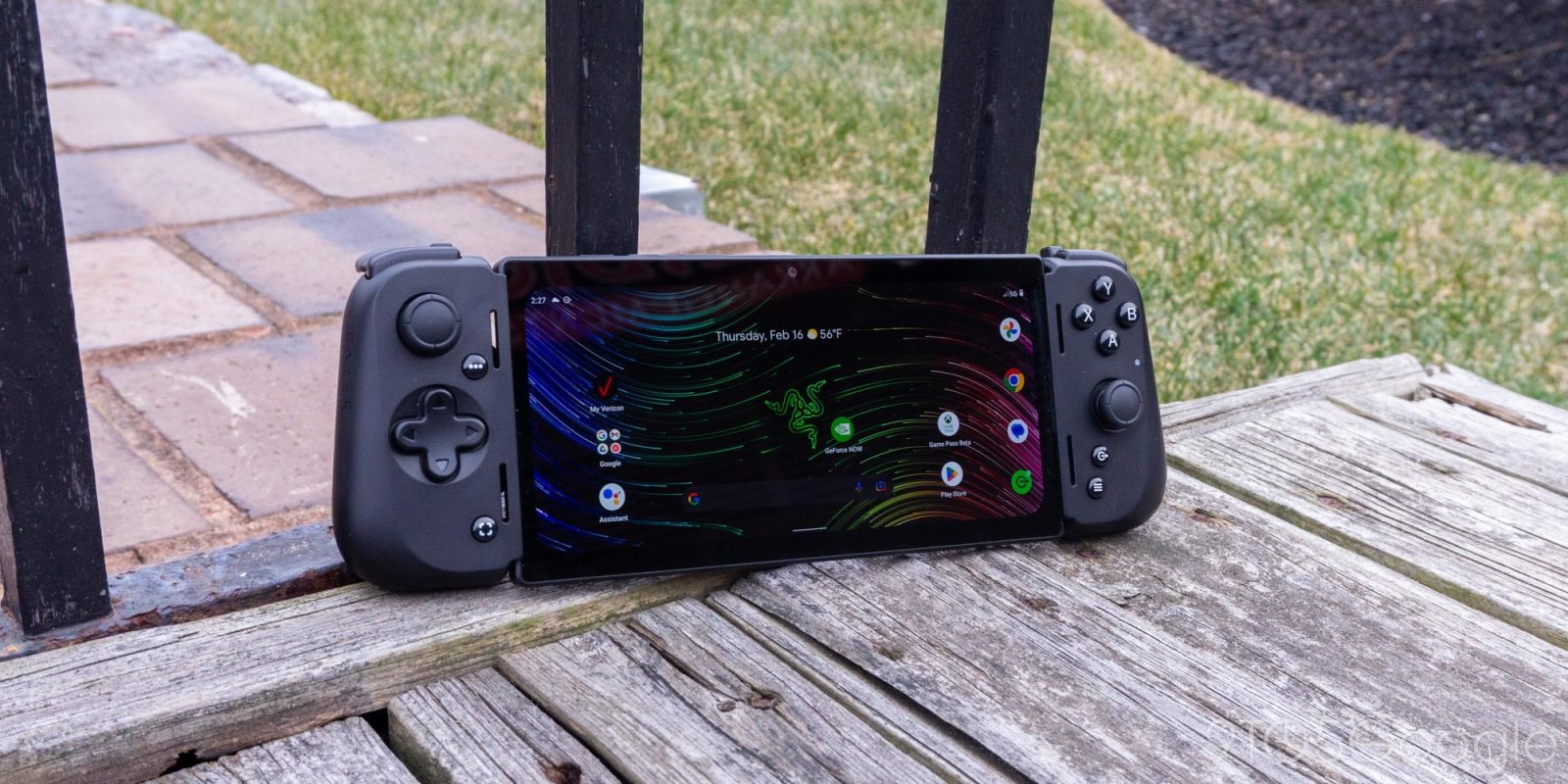
Whether you’re gaming in the cloud or mainlining the hottest mobile games, the Razer Edge 5G is hands-down the best hardware for the job. But who really needs a dedicated Android gaming handheld?
9to5Google has a rebooted newsletter that highlights the biggest Google stories with added commentary and other tidbits. Sign up here!
While mobile games started out as a fun little niche, they’ve grown to become a dominant force in the industry. Fast and easy gaming on the go offers a way to fill in empty moments of time like lunch breaks or train/bus commutes.
Of course, the raison d’être of mobile gaming is that you can play from the phone you’re already carrying around. Despite that, for years now, companies big and small have tried to use the open Android platform to build dedicated gaming devices like the Ouya console, Retroid Pocket series, and Logitech’s cloud-gaming-focused handheld.
Razer is the latest company to offer an attempt at nailing the Android gaming handheld. The Razer Edge 5G takes something of a maximalist approach to gaming, aiming to offer the best possible experience regardless of the kinds of games you like to play.
In its simplest form, the Razer Edge 5G is built like an oversized Android phone, making it easy to play touch-based games. When you want to play something more intense, you can attach the bundled Kishi V2 Pro accessory to gain a full controller, perfect for cloud gaming, emulators, or anything else you’d play with a controller. Razer even made it possible to play some touch-only games with the physical controller, maximizing the handheld’s potential.
In partnership with Verizon, Razer’s handheld is even available with full support for 5G mmWave connectivity, enabling full-quality cloud gaming anywhere with strong signal. So no matter what games you like to play (mobile, cloud streaming, emulation) or where you choose to get your game on, the Razer Edge 5G is ready to deliver.

Table of contents
Do you need a dedicated handheld?
In releasing the Edge, Razer had to answer two key questions. Why should someone have a gaming handheld instead of just a phone? And if someone wants a handheld, why should they buy the Razer Edge instead of a Steam Deck or Nintendo Switch?
On the latter question, the Razer Edge’s cloud gaming prowess enables far higher quality gameplay (and a larger always-available library) than any traditional handheld, paired with an extended battery life. And yet, it’s not limited to the cloud either. The Snapdragon chip inside is perfectly capable of running mobile games and emulators at full speed.
The trickier question to answer is why a mobile gamer would want a dedicated handheld at all. With a broad field of clip-on controllers — from Gamevice, GameSir, and even Razer — it’s never been easier to turn your phone into a gaming machine.
At least for me, the answer comes down to three things — battery life, context switching, and Google.
The battery life argument is straightforward. By gaming on a dedicated handheld, my phone has more charge at the end of the day. I can’t tell you how many times I’ve regretted spending a few minutes on a mobile game when I see that chunk missing from my battery.
Context switching is easily the most crucial thing that almost every gaming handheld achieves. While the Razer Edge’s Android foundation will certainly allow you to install any app you want, it’s far, far better to keep excess apps to a minimum. In a world where anyone can easily receive hundreds of notifications per day on their phone, a gaming device should be a place of respite and escapism.
Finally, there’s Google Search. I cannot tell you how many times during my playthroughs of games like Yakuza 0, Persona 5 Royal, and Cyberpunk 2077 that I’ll pause the game and use my phone to look online for specific information. Long gone are the glory days of BradyGames strategy guides.
While this is certainly still doable if you’re gaming on your phone, it can be a major inconvenience. By having a proper handheld, I’ve been able to keep my phone handy as a quick reference instead of constantly switching between apps.
These benefits may not be convincing for everyone, but in practice I’ve thoroughly preferred playing on the Razer Edge rather than using my phone as an all-in-one device.
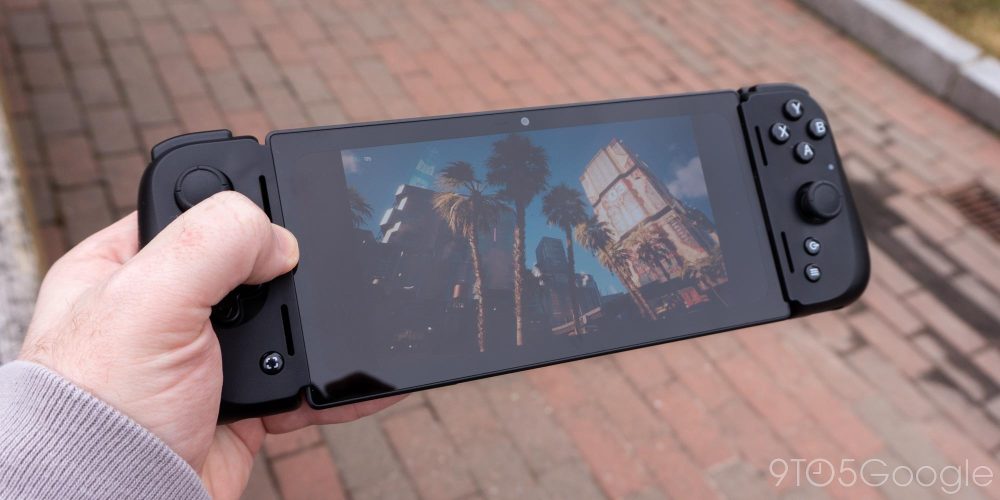
Why 5G?
Despite what the original marketing and hype had promised, 5G has not initiated a revolution in internet availability or even speeds — at least not in the United States. Even living in the largest city in my state, 5G availability is spotty at best, and mmWave is non-existent.
Regardless, the Razer Edge 5G could not have come at a better time. While true 5G networks are still being built out across the US, 4G LTE connections in some areas are actually surprisingly good enough for streaming. To put it to the test, I spent most of an hour-long car ride streaming from Xbox Game Pass, switching seamlessly between 4G and 5G networks. I’d be lying if I said mobile gameplay was a flawless experience, but I still came away impressed despite the hiccups.
Once mmWave 5G networks are more readily available around the country and pushing faster download speeds to customers, the experience of using Razer’s handheld should (in theory) become even better. Instead of just streaming 60fps, 1080p gameplay from Xbox, a full-speed 5G connection should be more than enough for the higher refresh rates available through GeForce Now.
Even if you don’t intend on spending any time playing on mobile data, I’d still recommend opting for the Razer Edge 5G over the Wi-Fi model, as it comes with an extra 2GB of RAM (6GB vs 8GB).
Predictable Snapdragon performance
Both on paper and in practice, the Razer Edge 5G is an Android powerhouse, thanks to the included Snapdragon G3x Gen 1 chip, built specifically for gaming. While it doesn’t live up to the latest Snapdragon 8 Gen 2 chip, it beats out the Pixel 7 Pro in benchmarks and has more than enough raw power to run most any game or emulator at full speed.

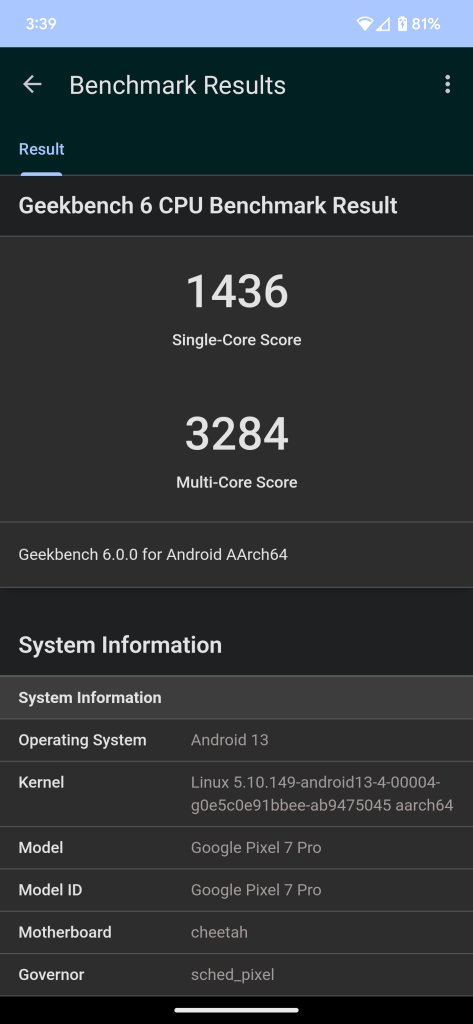
More importantly, unlike flagship Android phones which only use passive cooling, the Razer Edge handheld includes active cooling through an internal fan. This ensures that your gaming sessions can last for hours, though the handheld does still get warm over time under a heavy load.
Display and audio
In terms of raw specs, the Razer Edge offers a killer experience thanks to its 6.8-inch, FHD+ (2400×1080), 144Hz display. By far and away, this outmatches the Nintendo Switch (even the OLED model is 720p at 60Hz) and the Steam Deck, and makes for incredibly sharp graphics by comparison. This is doubly true when playing a native Android game or something in GeForce Now that’s able to keep up with the higher refresh rate.
Things aren’t all good though. For one, the Razer Edge uses the same 20:9 aspect ratio as you’d find on a typical smartphone. While this is perfect for any mobile-optimized games, most streaming services on Android only allow you to play in 16:9, meaning you’ll have thick pillarboxing on the sides. I think most people would have been better served with a traditional 16:9 display, even if it made some mobile games a tiny bit worse. For me, though, this is only a minor gripe.
Razer has also strangely opted to round off the corners of the display, which further accentuates the somewhat thick bezels. This isn’t noticeable when using streaming services — again, because of the thick black borders — but it’s a bit odd looking in native games like PUBG Mobile. For outdoor use, the Razer Edge display is just bright enough for an overcast day but not enough to use when it’s sunny out.
On the audio front, the Razer Edge features two side-mounted speakers, audio from which is redirected toward the front by the attached controller. Used indoors or in a car, the handheld puts out a surprisingly high volume of sound without needing to be maxed out and without sacrificing much clarity.
For those looking for a more private gaming experience without the usual delays introduced by Bluetooth headsets, the included Razer Kishi V2 Pro controller offers a proper 3.5mm port.
Razer Kishi V2 Pro controller
The defining feature of the Razer Edge 5G is the bundled Kishi V2 Pro controller that turns Razer’s latest Android into an actual gaming handheld. Much like the previous models of Razer Kishi and its many competitors, the controller is side-mounted and connects via USB-C.
Anyone coming from an Xbox controller should feel immediately familiar with the Razer Edge, with the staggered placement of its analog sticks. The face buttons and D-Pad are clicky and precise without being terribly noisy, though still a pinch too loud to use while my partner is sleeping.
The rear triggers have an okay amount of travel when pulled, but the shape and comfort of their design more than makes up for it. You can tell a lot of design work went into the fine details of the Razer Kishi V2 Pro’s trigger mechanisms.
Curiously, this version of the Kishi, combined with the curvature of the Razer Edge, allows for my fingers to curve around the grips in a similar manner to a full-size controller. I’ve found this especially helpful in first-person games where that grip stance is crucial to my accuracy. While still far from perfect, this has been the best mobile controller I’ve used for FPS games.

In terms of comfort and instant familiarity, the only aspect of this controller that seemed out of place is the placement of the home button. It’s placed only slightly offset from the start/menu button, and on many occasions I’ve pressed home when simply trying to pause my current game.
The Kishi V2 Pro also includes three buttons that can be customized through the Razer Nexus app — more on this later. Specifically, there are two fully reconfigurable buttons next to the two triggers, and the home button can be adjusted. By default, the home button is (annoyingly) set to open the Razer Nexus app, but you can toggle it to serve as a standard in-game home button. You may need to install a controller firmware update for this to appear.
Another unique feature of the Razer Kishi V2 Pro is that it actually features haptic rumble support. Having used many clip-on controllers over the past few years, I’ve consistently been disappointed by the lack of rumble, which often gives crucial feedback during gameplay.
In supported apps, the grips of the Kishi V2 Pro controller provide a surprisingly hefty rumble. This is the kind of inclusion that will only get better in time, as more apps and services add support. The Razer Nexus app also has the ability to use your game’s sound to detect moments that should probably trigger a rumble, though I’ve not managed to get this feature to work.
It’s also important to note that the Razer Kishi V2 Pro is not exclusive to the Edge handheld. As it connects over USB-C, the controller works perfectly well with almost any other Android device that can be slotted into it. With that in mind, keep an eye out for a separate in-depth review of the Kishi V2 Pro at a later date.
Undeniably Android
As mentioned, the Razer Edge 5G is built upon the open Android 12 platform, which gives the potential for incredible customization. Instead, Razer has opted for something that feels more like the Android experience on Pixel phones than a hardcore gaming handheld.
For instance, the home screen includes an unremovable “At A Glance” widget, offering upcoming calendar events, weather info, and more. There’s also an app drawer and your standard set of Google apps.
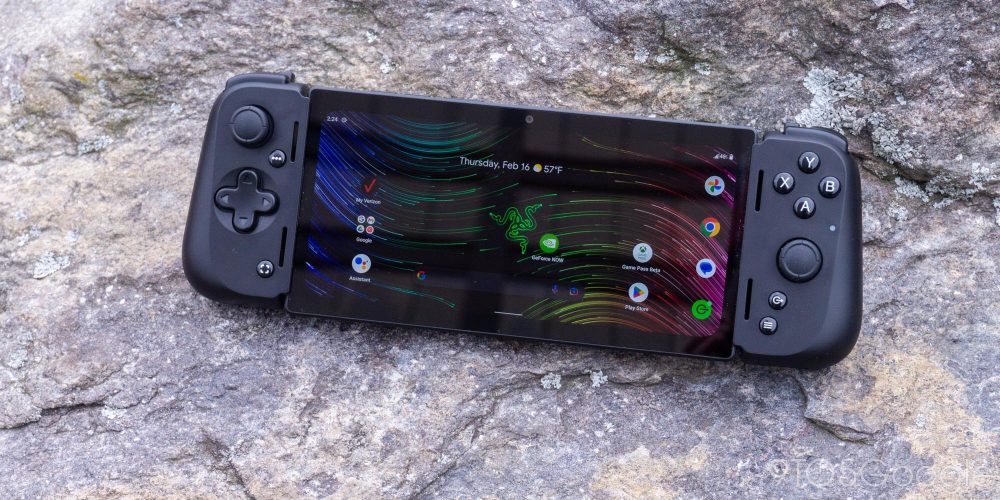
The only notable additions are a handful of pre-installed (and unremovable) apps for various games, tools, and streaming services:
- Epic Games (Used to install Fortnite)
- GeForce Now (Cloud streaming service)
- Parsec (Stream from your own PC)
- Steam Link (Stream Steam games from your PC)
- Xbox Cloud Gaming (PWA)
To actually get into Razer’s curated experience, you need to launch the Razer Nexus app, which catalogs the games you’ve installed and promotes other games/services you could try. The app is surprisingly bland, and I generally only find it useful for reconfiguring the controller.
You’re also required to launch games with it if you intend to use Virtual Controller Mode, which uses Android’s accessibility features to emulate on-screen taps and swipes. Having tested it with PUBG Mobile, a game notorious for not supporting hardware controllers, I was impressed with the depth and precision of customization, as well as with the low latency. Those who play Genshin Impact (which is notably also available through GeForce Now) will likely also enjoy Virtual Controller Mode.
With this handheld, Razer has put quite a lot of effort into crafting and fine-tuning the hardware, while the software is genuinely boring. I’m left wishing that the device could feel less like Android and more like a bespoke gaming experience.
For example, I wish that there was a way to unlock the Razer Edge using a pin that could be easily entered on the controller, as seen on the Xbox Series S/X. Instead you have the standard Android options: PIN, password, and pattern.
Similarly, the Razer Edge is sorely missing a more immersive game/app launcher and settings flow, especially by comparison to the Steam Deck and even Logitech’s Android handheld.
But what about the games?
The core criterion upon which every console/handheld/platform is (rightfully) judged is its game library. Consistently, they will sink (WiiU, Stadia) or swim (Switch, Game Pass) based on whether or not there’s actually enough games that people want to play.
To that end, there are thousands of Android-powered games in the Google Play Store, including a vast library of big name titles in Play Pass. Many of these have built-in support for controllers, and those that don’t can take advantage of the Edge’s Virtual Controller Mode.
So long as you’re in range of Wi-Fi or Verizon’s cell networks, the Razer Edge is also killer for cloud services like GeForce Now. It continues to blow my mind that it’s possible to play something like Cyberpunk 2077 on Ultra settings with ray tracing at 120fps, all from a handheld. Or with a Game Pass subscription, a compelling library of Xbox games is always right at your fingertips.
Similarly, just like the Steam Deck, you can play games from your existing gaming devices too. Stream from your gaming PC via Steam Link, take your PlayStation 5 on the go with PSPlay, or use the Xbox app to play from your Series S/X anywhere.
Plus, with the help of emulators, essentially the entirety of gaming history can be experienced from a high-performance Android device like the Razer Edge.
Truly, the potential game library of the Razer Edge 5G is limited only by your imagination. The expandable microSD storage offers plenty of additional space for any games you’d like to keep offline.
Battery life and portability woes
The biggest problem that I’ve had with the Razer Edge is actually related to the battery life. In active use, the handheld can typically handle 10-14 hours of gameplay, which is plenty enough, and it also charges back up quickly.
Instead, my issue is with the standby time, or how long it takes to drain the battery when it’s not in use. By itself, the Razer Edge can last several days without a charge, but — crucially — if you leave the Kishi V2 Pro controller connected, the battery will be fully drained in a matter of hours.
On multiple occasions I’ve forgotten to disconnect the controller and have come back to a fully dead battery. By comparison to a handheld like the Nintendo Switch, which is typically stored with its controllers connected, this has been a major disappointment.
Combined with the fact that the controller is connected with a simple USB-C port (and therefore prone to potential damage) the Razer Edge needs to travel as two separate pieces instead of one whole unit. By that token, it’s not nearly as portable as the Nintendo Switch, but it’s still far less heavy and bulky than a Steam Deck. Thankfully each piece is more or less pocketable, despite what you might expect from a “tablet.”
It’s my hope that Razer or a third party releases a dedicated carrying case for the Razer Edge and Kishi V2 Pro to keep the screen and controller protected while on the go instead of fumbling in my bag.
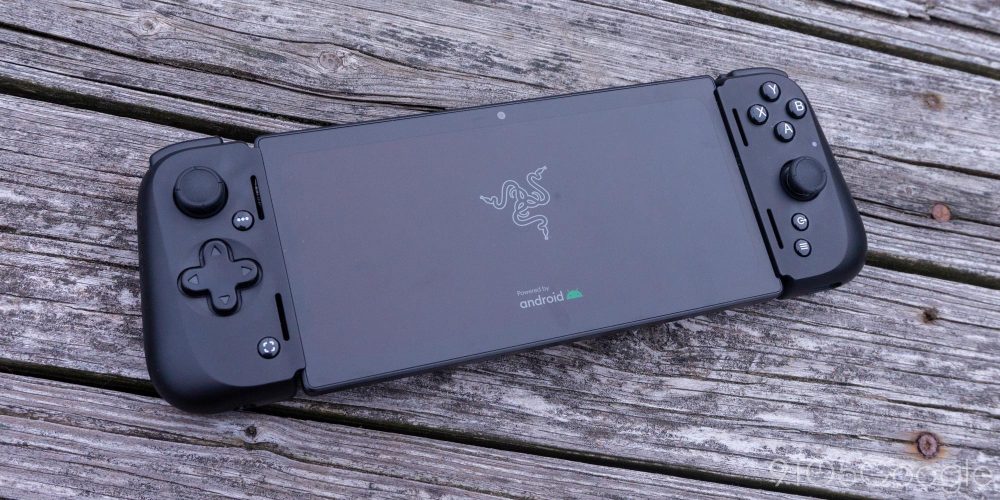
Should you buy the Razer Edge 5G?
At $399 for the Wi-Fi model ($50 more than Switch OLED, same price as Steam Deck), the Razer Edge may be a bit pricey for all but the most diehard cloud/mobile gaming fans. Admittedly, I find myself in this category and have quickly found the Razer Edge to be my favorite device from which to play.
There are certainly benefits to doing your mobile/cloud gaming on a secondary device, but for most people that likely won’t be worth hundreds of dollars. Razer has honed in on a particular niche of gamers and delivered a near-perfect device for that niche. For cloud gaming devotees, there’s never been a better handheld than this.
However, Verizon occasionally runs special discounts on the Razer Edge 5G that change the value proposition for the handheld. For a period after launch, you could add a line to your Verizon plan to get the 5G edition of the handheld (retail $599) for only $10 per month — over 36 months, so ultimately a discount of about $240. Buying a 5G phone on an unlimited plan at the same time would net you an even steeper discount.
If you can score that type of promotional pricing, the Razer Edge 5G is practically a must-buy for any Verizon customer that enjoys gaming.
FTC: We use income earning auto affiliate links. More.







Comments